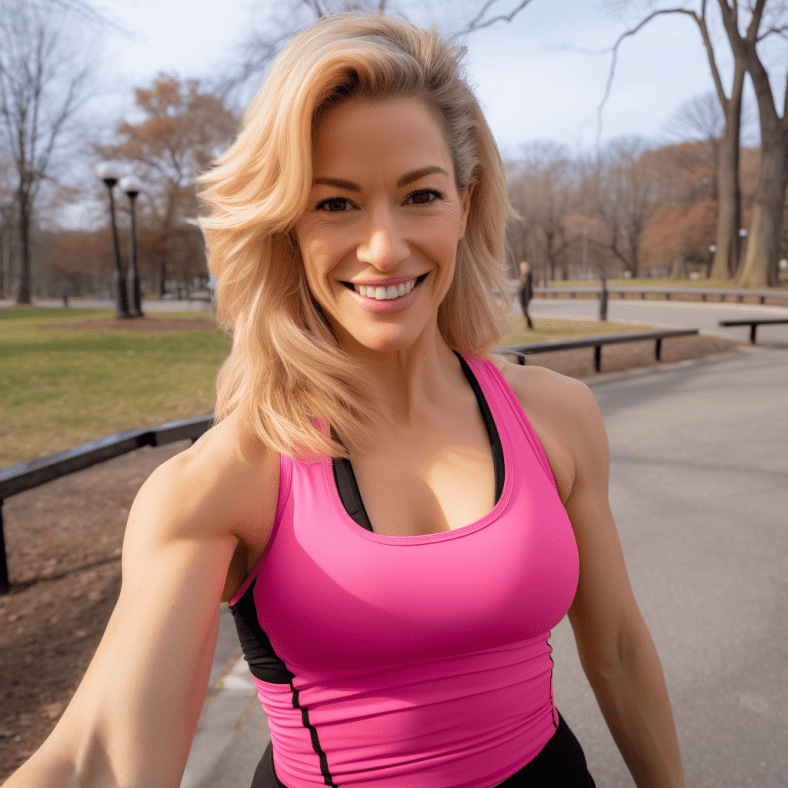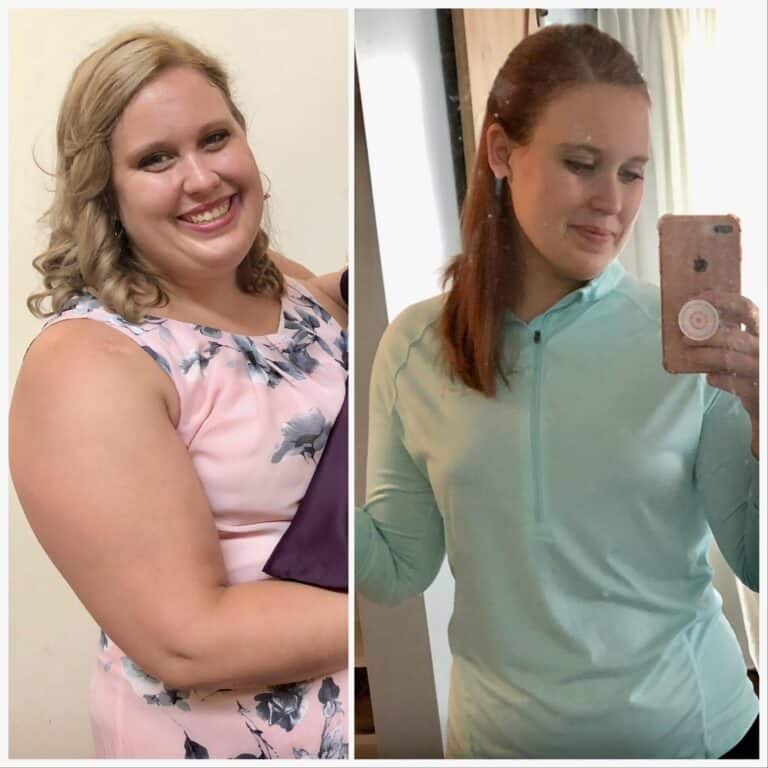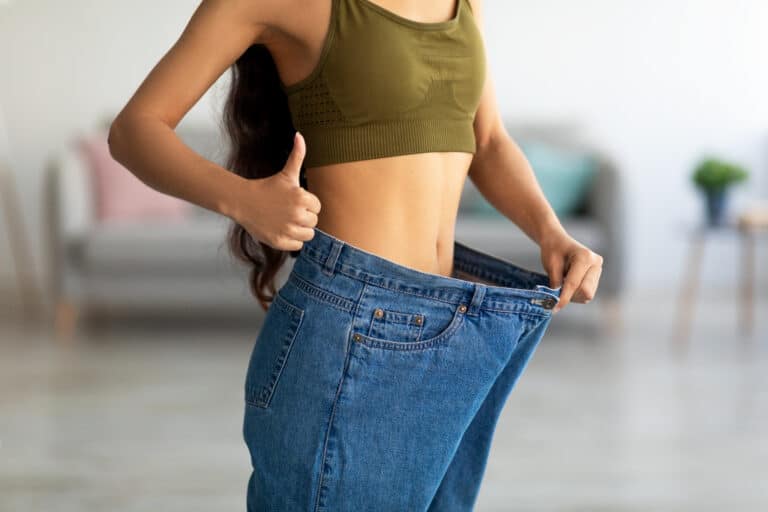The 8 Best Exercises for Weight Loss
Are you on a quest to shed those extra pounds and achieve a healthier, fitter you? Look no further! In this comprehensive guide, we’ll explore the eight best exercises for weight loss.
These exercises, when combined with a balanced diet, can help you achieve your fitness goals and embark on a journey to a healthier lifestyle.

1. Cardiovascular Workouts
Cardiovascular exercises, commonly known as “cardio,” are renowned for their exceptional calorie-burning capabilities and their positive impact on heart health. Incorporating cardio workouts into your fitness routine can be a game-changer on your weight loss journey.
Running for Weight Loss
Running is a dynamic high-impact activity that stands out as a top choice for individuals looking to shed excess pounds while enhancing their endurance. Here’s why running deserves a place in your fitness plan:
- Calorie Torching: Running is a calorie-burning powerhouse. It ramps up your metabolism, helping you burn calories during and even after your run. This process, known as excess post-exercise oxygen consumption (EPOC), means you continue to torch calories even when you’re done.
- Versatility: Whether you enjoy the fresh air and scenery of outdoor runs or prefer the controlled environment of a treadmill, running can be tailored to suit your preferences. You can choose to jog through your neighborhood, explore scenic trails, or hit the gym for a controlled workout.
- Endurance Boost: Running strengthens your cardiovascular system, improving your heart and lung health. Over time, you’ll notice increased stamina and endurance, allowing you to push your limits further with each run.
- Mood Enhancement: The “runner’s high” is real! Running releases endorphins, which are natural mood lifters. It’s an effective stress-buster and can help alleviate symptoms of depression and anxiety, making your weight loss journey a more positive experience.
Cycling for Weight Loss
Cycling is a low-impact exercise that offers an enjoyable and effective way to shed pounds. Here’s why you should consider hopping on a bike for your weight loss goals:
- Joint-Friendly: If you’re concerned about the impact on your joints, cycling is a fantastic choice. It’s gentle on the knees, hips, and ankles, making it suitable for individuals with joint issues or those recovering from injuries.
- Cardiovascular Fitness: Just like running, cycling enhances your cardiovascular fitness. It strengthens your heart, lowers blood pressure, and reduces the risk of heart disease. Regular cycling can improve your overall health.
- Outdoor Adventures: Exploring the great outdoors on a bike can be an exhilarating experience. Whether you’re cycling through scenic routes, urban trails, or countryside paths, you’ll enjoy the journey while working towards your fitness goals.
- Calorie Burning: Cycling at a moderate to brisk pace can burn a significant number of calories. It’s an excellent way to create a calorie deficit, a fundamental aspect of weight loss.
Swimming for Weight Loss
Swimming is a full-body workout that engages numerous muscle groups while offering a low-impact and joint-friendly exercise option. Here’s why taking a dip in the pool is a smart choice for weight loss:
- Full-Body Engagement: Swimming activates muscles throughout your body, including your legs, arms, back, and core. It’s a comprehensive workout that helps tone and strengthen your muscles.
- Low Impact: The buoyancy of water reduces the impact on your joints, making swimming an ideal choice for individuals with joint pain or arthritis. It allows you to engage in rigorous exercise without stressing your joints.
- Calorie Incinerator: Swimming is a calorie-burning powerhouse. The resistance of the water forces your muscles to work harder, resulting in a high calorie burn. It’s an effective way to create a calorie deficit and shed unwanted weight.
- Improved Flexibility and Posture: Regular swimming can enhance your flexibility and posture. The fluid movements in the water promote flexibility, and maintaining proper form while swimming contributes to better posture.
Incorporating running, cycling, or swimming into your fitness routine can yield remarkable results in your weight loss journey. Choose the activity that aligns with your preferences and fitness level, and remember that consistency is key. Whether you’re pounding the pavement, cycling through scenic landscapes, or gliding through the water, these cardiovascular exercises will propel you toward your weight loss goals while improving your overall health and well-being.

2. Strength Training
Strength training is a crucial component of any well-rounded fitness regimen. It involves resistance exercises designed to target and strengthen your muscles. Beyond building an impressive physique, strength training plays a pivotal role in helping you achieve your weight loss goals.
Weightlifting for Weight Loss
Weightlifting, often associated with bodybuilders, is a powerful tool for individuals seeking sustainable weight loss. Here’s why you should consider incorporating weightlifting into your fitness routine:
- Muscle Mass Matters: One of the key advantages of weightlifting is its ability to increase lean muscle mass. Unlike fat, muscle tissue is metabolically active, meaning it burns calories even when you’re at rest. The more muscle you have, the higher your resting metabolic rate, which translates to more calories burned throughout the day.
- Caloric Burn: Weightlifting sessions themselves can be calorie-intensive. You’ll burn calories during your workout, but the real magic happens afterward. Your body expends energy to repair and build muscle tissue post-exercise, contributing to additional calorie burn.
- Enhanced Fat Loss: When you lose weight, it’s not just about shedding pounds on the scale; it’s about losing fat while preserving muscle. Weightlifting helps preserve muscle mass during weight loss, ensuring that a higher percentage of your weight loss comes from fat, not muscle.
- Improved Strength and Functionality: Weightlifting enhances overall strength and functional fitness. As you become stronger, daily tasks become easier, and you’re better equipped to handle physical challenges.
Bodyweight Exercises for Weight Loss
Don’t have access to weights or a gym? No problem! Bodyweight exercises are highly effective for toning muscles, burning fat, and promoting weight loss. Here’s why bodyweight exercises are a fantastic choice:
- Accessible and Convenient: You don’t need fancy equipment or a gym membership to perform bodyweight exercises. They can be done virtually anywhere, from the comfort of your home to a nearby park.
- Effective Muscle Engagement: Bodyweight exercises like push-ups, squats, and planks engage multiple muscle groups simultaneously. They help you build strength, increase endurance, and shape your physique.
- Calorie Burn: These exercises can be modified to vary the intensity, making them excellent calorie-burning options. The more challenging the exercise, the more calories you’ll burn during your workout.
- Core Strengthening: Many bodyweight exercises require you to engage your core muscles for stability. This not only aids in sculpting a strong core but also improves posture and overall body balance.
- Progressive Overload: As you become more proficient, you can increase the difficulty of bodyweight exercises to continue challenging your muscles and achieving further gains.
Incorporating weightlifting or bodyweight exercises into your fitness routine can be a game-changer on your weight loss journey. Whether you opt for traditional weightlifting with dumbbells and barbells or choose the simplicity and versatility of bodyweight exercises, the goal remains the same: to build lean muscle mass, boost your metabolism, and set the stage for lasting weight loss success. Remember that consistency and progressive overload are key factors in reaping the long-term benefits of these exercises.
3. High-Intensity Interval Training (HIIT)
High-Intensity Interval Training (HIIT) has gained immense popularity in the fitness world for its ability to deliver remarkable results in a short amount of time. This training approach revolves around short bursts of intense exercise followed by brief periods of rest or low-intensity recovery. The beauty of HIIT lies in its potential to maximize calorie burn and improve fitness, even for those with busy schedules.
HIIT Workout Routines
HIIT workouts can be tailored to suit individuals of all fitness levels, from beginners to seasoned athletes. Here’s why HIIT workout routines are a game-changer:
- Time Efficiency: HIIT workouts are renowned for their time efficiency. You can complete a highly effective HIIT session in as little as 20 minutes. This makes them ideal for individuals juggling work, family, and other commitments.
- Calorie Incineration: The intensity of HIIT elevates your heart rate and pushes your body to its limits during short bursts of activity. As a result, you burn a significant number of calories in a relatively short time, creating a calorie deficit conducive to weight loss.
- Afterburn Effect: HIIT workouts trigger the “afterburn effect” or excess post-exercise oxygen consumption (EPOC). This means your body continues to burn calories at an elevated rate even after you’ve finished your workout, aiding in further calorie expenditure.
- Adaptability: HIIT can be customized to match your fitness level. You can adjust the intensity, duration, and exercises to create a routine that challenges you appropriately while gradually improving your stamina and endurance.
Tabata Workouts
Tabata is a specific form of HIIT that’s particularly well-known for its high-intensity structure. Here’s why Tabata workouts are an excellent choice for those seeking an efficient and effective workout:
- Four-Minute Intensity: Tabata workouts are lightning-fast, lasting only four minutes in total. These four minutes are divided into eight rounds of 20 seconds of intense exercise followed by 10 seconds of rest. The rapid cycling between high-intensity and rest periods pushes your body to the limit.
- Time-Saving: With Tabata, you can achieve a comprehensive workout in a mere fraction of the time required for traditional workouts. This makes it perfect for individuals with hectic schedules.
- Cardiovascular Fitness: Tabata workouts significantly boost cardiovascular fitness. The intense intervals elevate your heart rate, promoting better heart health and improved endurance.
- Metabolic Boost: The intense nature of Tabata workouts stimulates your metabolism, facilitating efficient calorie burning and fat loss.
- Variety of Exercises: Tabata can incorporate a variety of exercises, from bodyweight movements like squats and push-ups to equipment-based exercises such as kettlebell swings or stationary bike sprints. This variety keeps workouts engaging and challenging.
Incorporating HIIT workout routines or Tabata workouts into your fitness routine can yield impressive results. Whether you opt for HIIT sessions tailored to your fitness level or embrace the quick and intense nature of Tabata, you’ll be on the fast track to improving your fitness, boosting your metabolism, and achieving your weight loss goals. Remember to start gradually, listen to your body, and progressively increase the intensity as your fitness level improves.

4. Yoga and Pilates
Yoga and Pilates stand out in the fitness world for their unique focus on the mind-body connection. These practices emphasize not only physical well-being but also mental and emotional harmony. By combining movement, breath control, and mindfulness, yoga and Pilates offer a comprehensive approach to health and fitness.
Yoga Poses for Weight Loss
Yoga, an ancient practice with roots in India, provides a gentle yet effective way to enhance your overall fitness. Certain yoga poses are particularly beneficial for weight loss:
- Downward Dog (Adho Mukha Svanasana): This iconic yoga pose engages multiple muscle groups, including the arms, shoulders, and core. It promotes strength, flexibility, and balance. The inverted position of Downward Dog also encourages blood flow to the brain, enhancing mental clarity and mindfulness.
- Warrior Pose (Virabhadrasana): The Warrior series of poses, particularly Warrior I and Warrior II, challenge your leg muscles and improve lower body strength. These poses help you build stamina and stability while enhancing concentration and focus.
- Sun Salutations (Surya Namaskar): Sun Salutations are a sequence of dynamic yoga poses that create a full-body workout. They boost heart rate, improve flexibility, and promote weight loss by burning calories. Additionally, the flowing movements foster a sense of mindfulness as you synchronize breath with motion.
- Tree Pose (Vrikshasana): Balancing poses like Tree Pose require mental focus and concentration. They help improve your sense of balance and coordination while building strength in your legs and core.
Yoga’s emphasis on mindfulness and deep breathing can also positively influence your relationship with food and eating habits. By becoming more attuned to your body, you may find it easier to make conscious, healthy choices.
Pilates Exercises
Pilates is a low-impact exercise system developed by Joseph Pilates in the early 20th century. It focuses on strengthening the core muscles, enhancing posture, and improving overall body awareness. Here’s why Pilates is a fantastic addition to your fitness routine:
- Core Strengthening: Pilates is renowned for its core-focused exercises. By targeting the muscles in your abdomen, lower back, and pelvis, Pilates helps you develop a strong and stable core. This not only improves your posture but also supports a healthy spine.
- Mindful Movement: Similar to yoga, Pilates emphasizes the importance of concentration and controlled movements. You’ll learn to connect with your body, improving your body awareness and coordination.
- Improved Flexibility: While strengthening the core, Pilates also promotes flexibility. The exercises involve dynamic stretches that can enhance your overall range of motion.
- Low-Impact: Pilates is gentle on the joints, making it suitable for individuals of all fitness levels, including those with joint issues or injuries.
- Posture Enhancement: Pilates exercises encourage the development of long, lean muscles, which can lead to improved posture and reduced risk of musculoskeletal pain.
Incorporating yoga poses for weight loss and Pilates exercises into your fitness routine offers a holistic approach to health and well-being. These practices not only help you burn calories and build strength but also foster mindfulness, improve flexibility, and promote mental well-being. Whether you’re holding yoga poses or engaging in controlled Pilates movements, you’re on a journey toward achieving balance and harmony in both your body and mind.

5. CrossFit Workouts
CrossFit is a dynamic, high-intensity fitness program renowned for its emphasis on functional movements, variety, and intensity. It offers a unique and challenging approach to fitness that engages both the body and the mind.
CrossFit Movements
CrossFit workouts are known for their diverse range of movements, designed to target multiple muscle groups simultaneously. Here’s a closer look at some of the core CrossFit movements:
- Squats: Squats are a foundational movement in CrossFit. Whether it’s air squats, front squats, or overhead squats, they engage the lower body, including the quads, hamstrings, and glutes. Squats help build lower body strength, power, and endurance.
- Deadlifts: Deadlifts are a compound exercise that primarily works the muscles in your lower back, hamstrings, and glutes. They also engage your core, making it a full-body movement. Deadlifts are excellent for developing strength and functional fitness.
- Kettlebell Swings: Kettlebell swings are a dynamic movement that targets the posterior chain, including the glutes, hamstrings, and lower back. This explosive exercise not only builds strength but also improves cardiovascular fitness.
- Box Jumps: Box jumps require explosive power from your legs and engage your core for stability. They are excellent for developing agility, coordination, and lower body strength.
- Pull-Ups and Push-Ups: Bodyweight exercises like pull-ups and push-ups are frequently incorporated into CrossFit workouts. They help build upper body strength and endurance while improving functional fitness.
- Olympic Lifts: CrossFit often includes Olympic weightlifting movements like snatches and clean and jerks. These complex movements engage multiple muscle groups and demand precision and technique. They are exceptional for developing strength, power, and explosiveness.
CrossFit for Beginners
The intensity and variety of CrossFit workouts may seem intimidating to some, but CrossFit is highly accessible to beginners. Here’s why you shouldn’t shy away from giving it a try:
- Structured Classes: Many CrossFit gyms offer structured classes specifically designed for beginners. These classes focus on teaching proper form, technique, and gradually increasing intensity. You’ll have the guidance and support of experienced coaches.
- Scalability: CrossFit workouts are scalable, meaning they can be adjusted to suit your fitness level. Whether you’re just starting out or have been training for a while, the workouts can be modified to challenge you appropriately.
- Community Support: CrossFit fosters a strong sense of community. You’ll work out alongside individuals of varying fitness levels, all encouraging and supporting one another. This camaraderie can be motivating and make your fitness journey more enjoyable.
- Functional Fitness: CrossFit’s emphasis on functional movements means you’re training your body to perform everyday tasks more efficiently. This is not only beneficial for athletic performance but also for improving overall quality of life.
CrossFit’s blend of functional movements, intensity, and community spirit can make it a rewarding fitness experience for individuals of all levels. Whether you’re aiming to build strength, improve cardiovascular fitness, or simply challenge yourself in new ways, CrossFit has something to offer on your fitness journey. Don’t let intimidation hold you back; take that first step, and you may find yourself on a path to a healthier, fitter you.
6. Aerobics and Dance
If the thought of hitting the gym or doing repetitive exercises doesn’t quite excite you, don’t worry; there are plenty of lively and enjoyable alternatives that can help you stay fit while having a blast.
Zumba and Dance Workouts
Zumba and dance workouts are not just about getting fit; they’re about having fun while doing it. Here’s why you might want to groove your way into these lively workouts:
- Joyful Movement: Dancing is inherently joyful. It allows you to express yourself through movement and rhythm while enjoying the music. Zumba, in particular, incorporates Latin-inspired dance moves, making it a lively and energetic fitness experience.
- Calorie Burn: Dance workouts can be deceptively effective at burning calories. You might not even realize how much you’re working because you’re too busy enjoying the music and movement. The high-energy routines elevate your heart rate, helping you shed those extra pounds.
- Stress Reduction: Dancing is a fantastic stress reliever. The release of endorphins during dance workouts can boost your mood and reduce stress and anxiety. It’s a wonderful way to unwind and have a good time while taking care of your physical health.
- Social Interaction: Many dance classes, including Zumba, are done in a group setting. This provides an opportunity for social interaction and community support, making your fitness journey even more enjoyable.
Aerobics Benefits
Aerobics is a dynamic fitness option that blends cardio and strength exercises for a well-rounded workout. Here’s why you might want to consider aerobics classes:
- Cardiovascular Fitness: Aerobics classes are designed to elevate your heart rate, making them excellent for improving cardiovascular health. Regular participation can enhance your endurance, lower blood pressure, and boost overall heart function.
- Weight Loss: Aerobics classes often incorporate high-intensity intervals, which are effective for calorie burning. The combination of cardio and strength exercises helps create a calorie deficit, facilitating weight loss.
- Improved Muscle Tone: While aerobics primarily focuses on cardio, it also includes strength-training elements. This results in improved muscle tone and overall body strength.
- Variety: Aerobics classes come in various forms, from step aerobics to dance-based aerobics. This variety keeps your workouts fresh and exciting, reducing the chances of boredom.
- Flexibility: Many aerobics routines include stretches and flexibility exercises, helping you improve your overall range of motion and reduce the risk of injury.
Whether you’re shimmying through a Zumba class or following the energetic moves in an aerobics session, these workouts offer a delightful blend of fitness and fun. They not only help you achieve your weight loss goals but also contribute to improved mood, reduced stress, and a sense of community. So, put on your dancing shoes or join an aerobics class, and get ready to experience the joy of fitness in motion.

7. Sports and Recreation
Exercise doesn’t have to feel like a chore; it can be an exciting and social experience when you engage in sports and recreational activities. Here’s why you might want to consider adding some playtime to your fitness routine.
Tennis, Basketball, and Other Sports
Team sports like tennis and basketball offer a fantastic combination of fitness and social interaction. Here’s why they can be a great choice for those seeking an active lifestyle:
- Full-Body Workout: Tennis and basketball are dynamic sports that engage multiple muscle groups. They require running, jumping, quick lateral movements, and hand-eye coordination. You’ll get a full-body workout while having a blast.
- Competitive Spirit: If you thrive on competition and enjoy the camaraderie of playing with friends, team sports provide the perfect outlet. The friendly rivalry can make your workouts more engaging and motivating.
- Improved Agility: The agility required in sports like tennis and basketball can enhance your overall coordination and balance. It’s a fun way to stay agile and nimble.
- Mental Focus: Team sports demand mental focus and quick decision-making. Engaging your mind while playing can be as rewarding as the physical benefits.
- Cardiovascular Fitness: The constant movement and changes in pace during these sports elevate your heart rate, providing an excellent cardiovascular workout. Regular play can lead to improved endurance.
Recreational Activities
Recreational activities encompass a wide range of hobbies and outdoor pursuits that double as exercise. Here’s why you should consider incorporating them into your daily life:
- Enjoyment Factor: The key to sustaining an active lifestyle is finding activities you genuinely enjoy. Whether it’s hiking, kayaking, gardening, or even dancing, these activities don’t feel like work because they’re fun.
- Variety: Recreational activities offer endless variety. You can switch between different activities, ensuring that your fitness routine remains exciting and fresh.
- Connection with Nature: Many recreational activities, such as hiking and gardening, allow you to connect with nature and enjoy the great outdoors. This can have positive effects on your mental well-being as well.
- Low Stress: Recreational activities are often low-stress and can be done at your own pace. They provide an opportunity to unwind and relieve stress.
- Social Opportunities: Some recreational activities, like group hikes or dance classes, offer social opportunities, allowing you to meet like-minded individuals and expand your social circle.
By integrating sports and recreational activities into your daily life, you can make exercise an enjoyable and fulfilling part of your routine. Whether you’re serving an ace on the tennis court, shooting hoops with friends, or exploring the great outdoors on a hike, these activities provide the dual benefit of physical fitness and a heightened sense of fun and adventure. So, go ahead and find the activities that resonate with you, and let the enjoyment of movement become a natural and rewarding part of your daily life.
8. Low-Impact Exercises
Low-impact exercises provide an effective way to stay active without putting excessive strain on your joints. They’re particularly valuable for individuals with joint concerns or those who simply prefer a gentler approach to fitness.
Swimming for Low-Impact
Swimming is a standout option when it comes to low-impact exercises. Here’s why it’s an excellent choice for maintaining fitness while being gentle on the joints:
- Joint-Friendly: Water buoyancy significantly reduces the impact on your joints. When you’re submerged, your body weight is supported by the water, alleviating stress on your knees, hips, and spine. This makes swimming an ideal exercise for individuals with joint pain, arthritis, or mobility issues.
- Full-Body Workout: Swimming engages multiple muscle groups simultaneously, offering a comprehensive workout. It strengthens your arms, legs, back, and core while promoting cardiovascular fitness. The resistance of the water provides a gentle way to tone and build lean muscle.
- Cardiovascular Health: Swimming raises your heart rate, enhancing cardiovascular fitness and improving lung capacity. It’s an effective way to maintain heart health without high-impact stress.
- Stress Relief: The rhythmic, fluid movements of swimming can have a calming and meditative effect. It’s an excellent stress-relief activity that promotes mental well-being.
- Flexibility: Swimming involves various strokes and movements that promote flexibility and range of motion in your joints. It’s particularly beneficial for individuals seeking to improve joint mobility.
Yoga for Joint Health
Yoga is a time-honored practice that focuses on gentle stretches, controlled movements, and mindful breathing. It offers numerous benefits for joint health and overall well-being:
- Improved Joint Flexibility: Yoga involves a wide range of poses and stretches that target various muscle groups and joints. Regular practice can help improve joint flexibility, reduce stiffness, and enhance overall mobility.
- Pain Management: Yoga is often recommended as a complementary therapy for individuals with chronic joint pain conditions like arthritis. The gentle, controlled movements can help alleviate discomfort and improve joint function.
- Enhanced Balance and Stability: Many yoga poses require balance and stability, which can be beneficial for joint health. Improved balance can reduce the risk of falls and injuries, especially in older individuals.
- Mind-Body Connection: Yoga places a strong emphasis on the mind-body connection. It encourages mindfulness, relaxation, and stress reduction, which can positively impact joint health and overall quality of life.
- Customization: Yoga is highly adaptable. You can modify poses and choose practices that align with your specific needs and limitations. There are even chair yoga options for individuals with limited mobility.
By incorporating swimming or yoga into your fitness routine, you can prioritize joint health and well-being without sacrificing the benefits of exercise. Whether you’re gliding through the water or practicing gentle yoga poses, these low-impact activities offer a gentle yet effective path to maintaining fitness and promoting joint comfort. Remember to consult with Dr. Nancie and Dr. Belsito or fitness instructor to ensure that these activities are suitable for your specific circumstances and to receive guidance on proper form and technique.
FAQs About the 8 Best Exercises for Weight Loss
Q1: Can I lose weight with just one type of exercise from the list?
A1: While each exercise on the list is effective, combining different types of workouts is often the most successful approach. It keeps your routine exciting, prevents plateaus, and ensures you engage various muscle groups.
Q2: How often should I exercise to see weight loss results?
A2: Consistency is key. Aim for at least 150 minutes of moderate-intensity exercise or 75 minutes of vigorous-intensity exercise per week, as recommended by health authorities. Gradually increase your workout duration and intensity for better results.
Q3: Are these exercises suitable for beginners?
A3: Most of these exercises can be adapted for beginners. It’s crucial to start at your fitness level, gradually progress, and consider consulting a fitness professional or trainer for guidance, especially if you’re new to exercise.
Q4: Can I do these exercises at home?
A4: Yes, many of these exercises, such as bodyweight exercises and some forms of HIIT, can be done at home with minimal equipment. Others may require access to a gym or specific facilities.
Q5: Is diet important for weight loss along with exercise?
A5: Absolutely. Diet and exercise go hand in hand. To achieve weight loss, it’s essential to maintain a balanced, calorie-controlled diet that supports your fitness goals.
Q6: How long does it take to see noticeable weight loss results?
A6: Weight loss results can vary depending on factors like your starting point, exercise intensity, and dietary choices. Typically, you may start noticing changes in a few weeks, but significant results may take several months.
Q7: Are there any safety precautions for these exercises?
A7: Safety is paramount. Warm up before each session, use proper form, stay hydrated, and listen to your body. If you have any medical conditions or concerns, consult Dr. Nancie and Dr. Belsito before starting a new exercise program.
Q8: Can I do these exercises if I have joint issues?
A8: Low-impact exercises like swimming, cycling, and some forms of aerobics are gentle on the joints and can be suitable for individuals with joint issues. Consult with Dr. Nancie and Dr. Belsito or physical therapist for personalized recommendations.
Start Your Weight Loss Journey Today
Achieving weight loss goals requires a multifaceted approach that combines a balanced diet with regular exercise. The eight exercises outlined here provide diverse options to help you burn calories, build strength, and boost your metabolism. Remember that the most effective exercise routine is one you enjoy and can sustain over time. Consult with fitness experts or Dr. Nancie and Dr. Belsito to create a personalized fitness plan tailored to your needs and goals. With dedication, patience, and the right guidance, you can make exercise a rewarding and successful part of your weight loss journey.
What To Do Next…
For people who want to stop struggling with their weight

We Now Have FDA Approved Semaglutide Weight Loss in Sarasota and Bradenton Florida. Book a free consultation and find out about the semaglutide cost and semaglutide side effects. Semaglutide injection are available after your free consultation.






